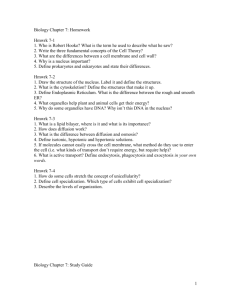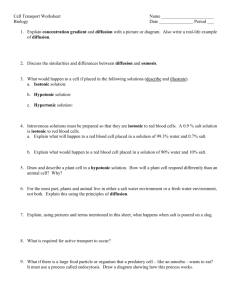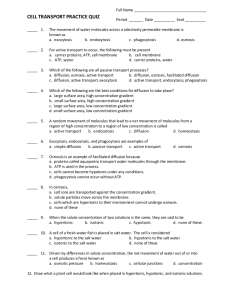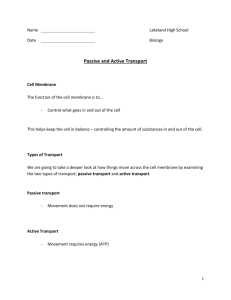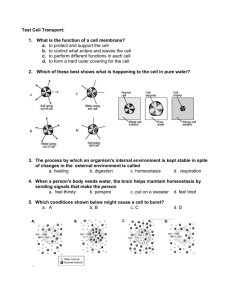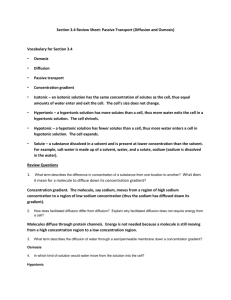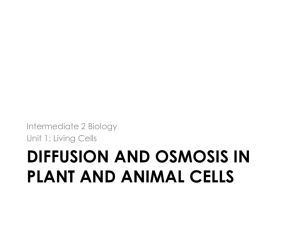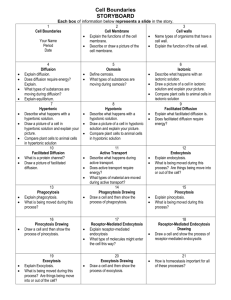review_for_test_3
advertisement
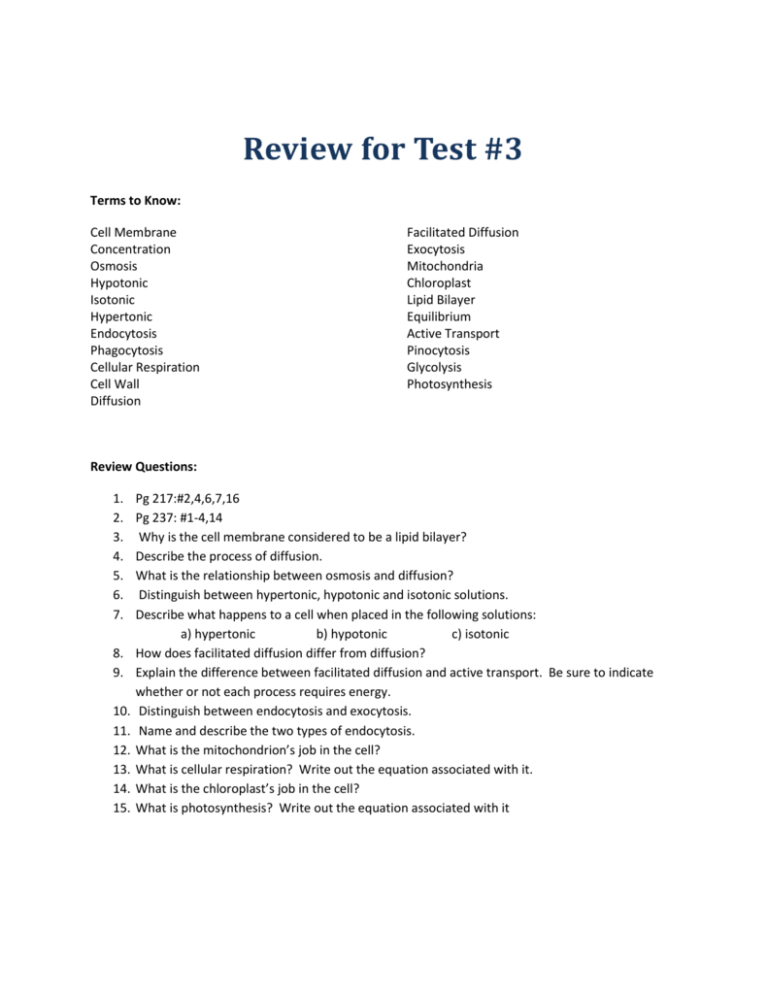
Review for Test #3 Terms to Know: Cell Membrane Concentration Osmosis Hypotonic Isotonic Hypertonic Endocytosis Phagocytosis Cellular Respiration Cell Wall Diffusion Facilitated Diffusion Exocytosis Mitochondria Chloroplast Lipid Bilayer Equilibrium Active Transport Pinocytosis Glycolysis Photosynthesis Review Questions: 1. 2. 3. 4. 5. 6. 7. 8. 9. 10. 11. 12. 13. 14. 15. Pg 217:#2,4,6,7,16 Pg 237: #1-4,14 Why is the cell membrane considered to be a lipid bilayer? Describe the process of diffusion. What is the relationship between osmosis and diffusion? Distinguish between hypertonic, hypotonic and isotonic solutions. Describe what happens to a cell when placed in the following solutions: a) hypertonic b) hypotonic c) isotonic How does facilitated diffusion differ from diffusion? Explain the difference between facilitated diffusion and active transport. Be sure to indicate whether or not each process requires energy. Distinguish between endocytosis and exocytosis. Name and describe the two types of endocytosis. What is the mitochondrion’s job in the cell? What is cellular respiration? Write out the equation associated with it. What is the chloroplast’s job in the cell? What is photosynthesis? Write out the equation associated with it Review for Test #3: Answer Key Pg 217 2:B 4:D 6:A 7:D 16:Carbon dioxide +water----- sugars + oxygen Pg 237 1:C 2:B 3:B 4:C 14:oxygen + glucose ---- carbon dioxide + water + oxygen 3. Two layers of lipid molecules 4. Movement of particles from an area of high concentration to an area of low concentration 5. Osmosis is the diffusion of water through a selectively permeable membrane. 6. Hypertonic =larger concentration of solute, hypotonic= smaller concentration of solute, isotonic= concentration is same throughout 7. Hypertonic= water from the cell will move out of the cell, possibility of the cell shrinking Hypotonic= water from the solution will move into the cell, possibility of a burst cell Isotonic= water will move into and out of the cell at the same rate 8. Facilitate diffusion requires the use of protein transports 9. Facilitated diffusion involves particles moving from high to low concentration and does not require any energy. Active transport involved particles moving from low to high concentration and requires energy (ATP) from the cell. 10. Endocytosis= substances moving INTO the cell Exocytosis= substances moving OUT OF the cell 11. Pinocytosis= liquid being moved into the cell Phagocytosis= particles being moved into the cell 12. To provide the cell with energy through the conversion of glucose. 13. Process that releases energy by breaking down glucose in the presence of oxygen. 14. To make food (glucose) for the cell through the energy of the sun, water and carbon dioxide. 15. Process that uses the energy from the sun to convert water and carbon dioxide into high energy sugars and oxygen.

